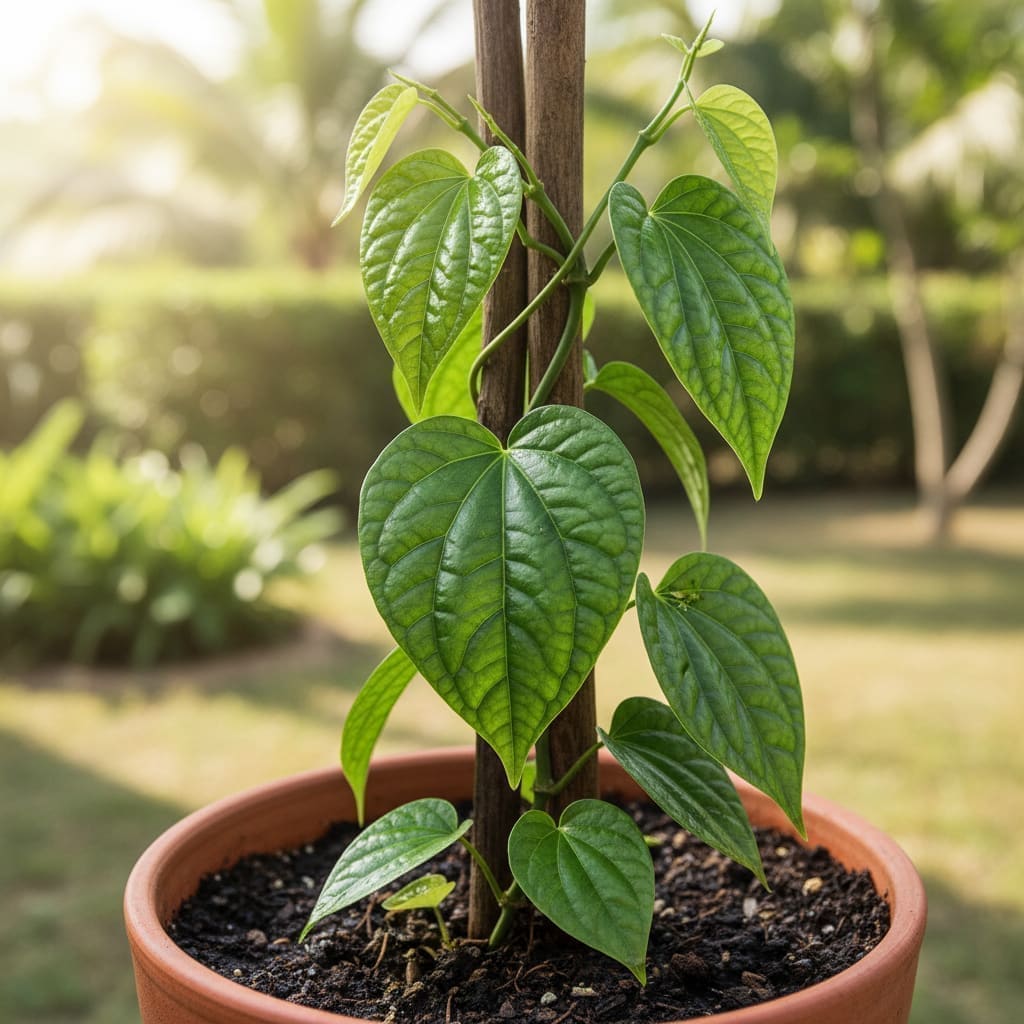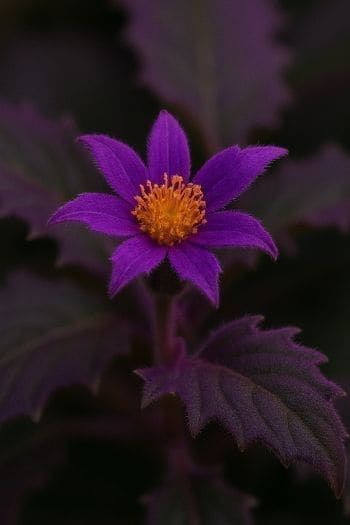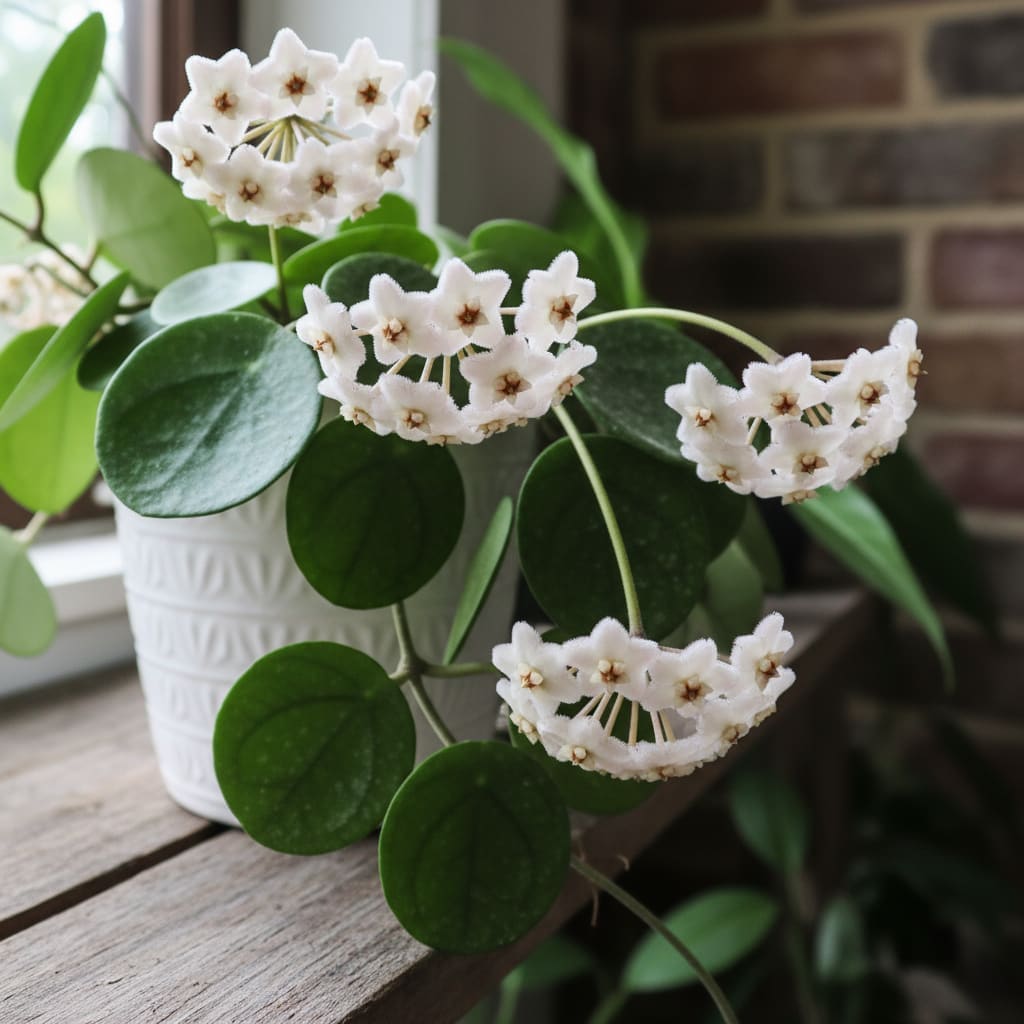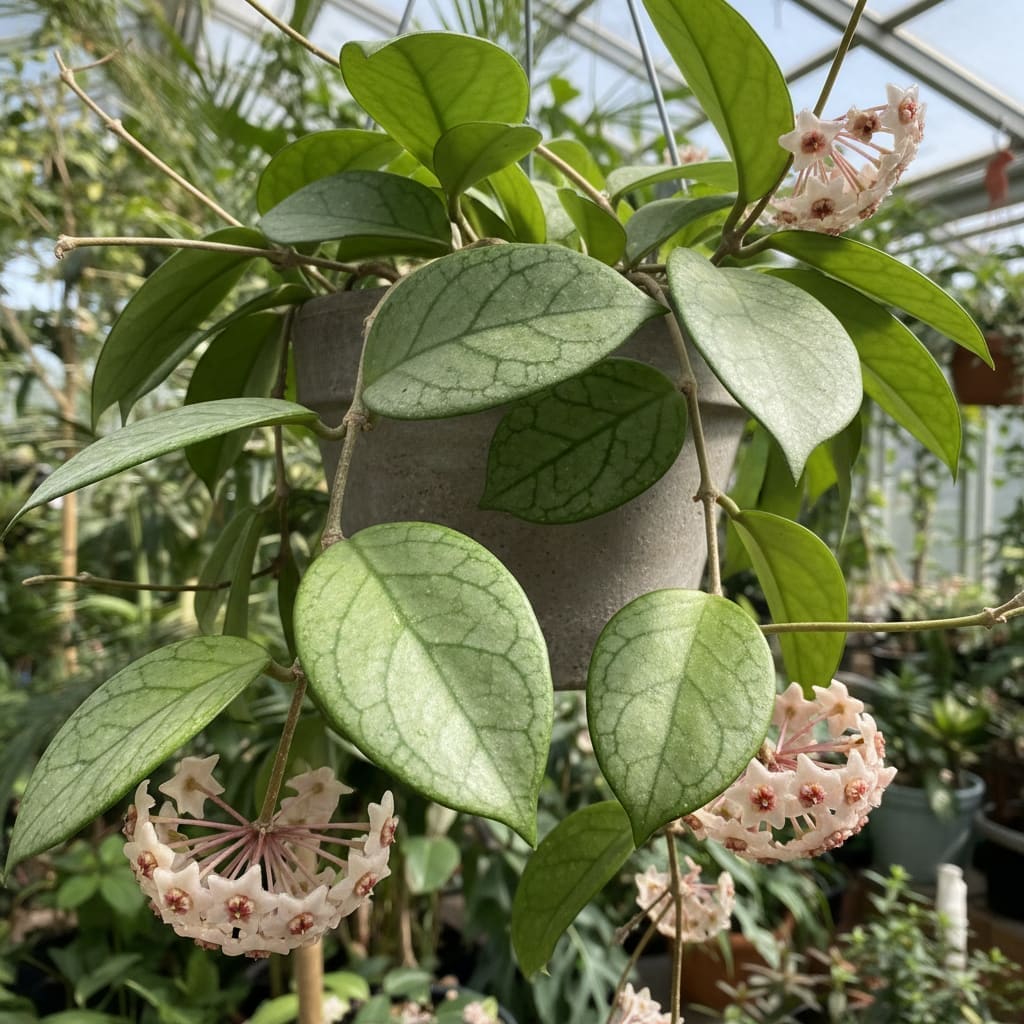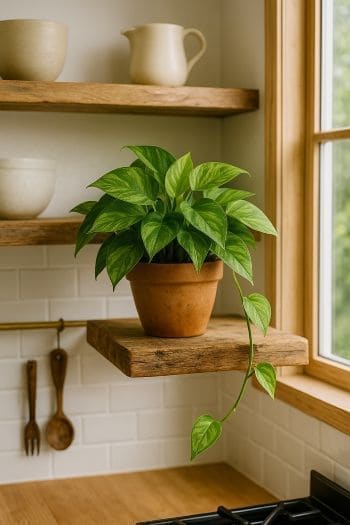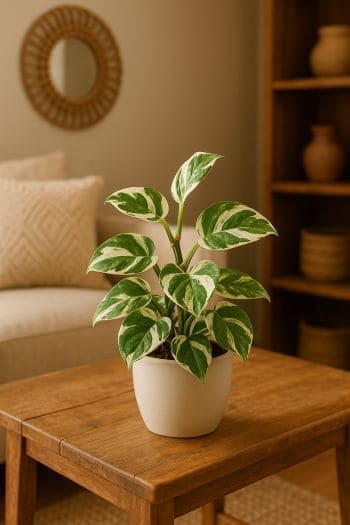Amydrium medium Care & Growing Guide
Overview
Amydrium medium is a tropical aroid native to the lush rainforests of Southeast Asia. Known for its striking, fenestrated leaves and vining growth habit, it is an increasingly popular choice among indoor plant enthusiasts. In its natural habitat, it grows as an epiphyte or hemiepiphyte, climbing trees in search of light. Its unique foliage not only adds an exotic touch to interiors but also serves a functional purpose in the wild—fenestrations allow heavy rain to pass through without damaging the leaves.
Identification & Growth Habit
Amydrium medium is part of the Araceae family and is often mistaken for Monstera or Rhaphidophora species due to its split leaves. Mature leaves are elongated, leathery, and develop deep fenestrations. Juvenile leaves are smaller and may be solid until the plant matures. This species exhibits a trailing or climbing growth habit, producing aerial roots that help it cling to supports such as moss poles, trellises, or tree trunks.
Light & Placement
In the home, aim to replicate the dappled light of its native rainforest understory. Place your Amydrium medium in bright, indirect light. A location near an east- or north-facing window is ideal, or a few feet back from a bright south- or west-facing window with sheer curtains. Avoid prolonged direct sunlight, which can scorch the foliage, and too little light, which can slow growth and reduce leaf fenestration.
Watering & Humidity
Water when the top 2 inches (5 cm) of soil feel dry to the touch. Use room-temperature water and ensure excess water drains freely from the pot. Overwatering can lead to root rot, so avoid letting the plant sit in waterlogged soil. Amydrium medium thrives in high humidity—ideally above 60%. Increase humidity by using a humidifier, grouping plants together, or placing the pot on a pebble tray with water.
Soil & Repotting
Use a well-draining, airy mix to mimic its epiphytic environment. A recommended blend is equal parts peat or coco coir, perlite, and orchid bark. This combination retains some moisture while allowing excess water to drain quickly. Repot every 1–2 years in spring if the plant becomes root-bound or the soil has broken down. Choose a pot with drainage holes to prevent water accumulation.
Fertilizing
Feed monthly during the active growing season (spring and summer) with a balanced, water-soluble fertilizer diluted to half strength. This supports healthy foliage development and steady growth. Reduce feeding in autumn and winter when growth naturally slows.
Pruning & Training
Prune to control size, encourage bushier growth, and remove damaged or yellowing leaves. Use clean, sharp scissors or pruning shears. Amydrium medium responds well to training—provide a moss pole, trellis, or other vertical support to encourage upward growth and larger, more fenestrated leaves. Regularly secure stems to the support with soft ties as they grow.
Propagation
Step-by-Step Stem Cutting Method
- Select a healthy vine with at least one node and one leaf.
- Using sterilized scissors, cut just below the node.
- Remove any leaves that would sit below the water or soil line.
- Place the cutting in a jar of clean water or directly into moist, well-draining soil.
- If rooting in water, change the water every few days to prevent stagnation.
- Keep the cutting in bright, indirect light and maintain high humidity.
- Once roots are 2–3 inches long, pot the cutting into its permanent container.
Common Problems
Pests
- Spider mites: Look for fine webbing and stippled leaves. Treat with insecticidal soap or neem oil.
- Mealybugs: Identify by cottony clusters on stems and leaf joints. Remove manually and treat with horticultural oil.
- Scale insects: Appear as small, brown bumps. Gently scrape off and follow with insecticidal treatment.
Diseases
- Root rot: Caused by overwatering or poor drainage. Remove affected roots and repot in fresh, well-draining soil.
- Leaf spot: Often fungal or bacterial. Remove affected leaves and improve air circulation.
Toxicity & Pet Safety
Amydrium medium is considered toxic if ingested by pets or humans due to calcium oxalate crystals, which can cause irritation. Keep out of reach of cats, dogs, and small children.
Styling & Decor Tips
With its tropical aesthetic, Amydrium medium makes a striking statement in living rooms, offices, or bright bathrooms. Train it up a moss pole for a vertical accent or let it trail from a hanging basket for a cascading effect. Pair it with other aroids for a lush, layered display.
Varieties & Cultivars
While Amydrium medium does not have a wide range of named cultivars, there are variations in leaf size and fenestration depending on maturity and growing conditions. Some growers distinguish between juvenile and mature forms, with the latter displaying more dramatic splits.
Buying Tips & Maturity
When purchasing, look for plants with firm, unblemished leaves and no signs of pests. Inspect the undersides of leaves and the soil surface. Younger plants may have solid leaves; fenestrations develop as the plant matures and receives adequate light and support.
Seasonal Care
- Spring/Summer: Peak growth period—provide regular feeding, consistent watering, and high humidity.
- Autumn/Winter: Growth slows—reduce watering and feeding, but maintain humidity and protect from cold drafts.
FAQ
- How fast does Amydrium medium grow? Growth rate is moderate and increases with optimal light, warmth, and humidity.
- Why are my leaves not splitting? Insufficient light, lack of vertical support, or immaturity can delay fenestration.
- Can Amydrium medium grow outdoors? In tropical or subtropical climates, it can grow outdoors in shaded, humid conditions. In temperate zones, keep it indoors.
- Does it need a moss pole? While not strictly necessary, a moss pole or trellis supports vertical growth and encourages larger, fenestrated leaves.
- How often should I repot? Every 1–2 years, or when the plant becomes root-bound or the soil degrades.
Troubleshooting Scenarios
- Yellow lower leaves with firm texture: Often a sign of natural aging rather than a problem; prune as needed.
- Brown, crispy leaf edges: May indicate low humidity or inconsistent watering—check ambient moisture and adjust.
- Leggy growth with long internodes: Plant is stretching for light; move closer to a bright, indirect source.
- Wilting despite moist soil: Could be early root rot—inspect roots and improve drainage immediately.
Advanced Pruning & Training
For a fuller appearance, pinch back new growth tips during the active season to encourage lateral shoots. Advanced growers can experiment with espalier techniques, guiding vines horizontally along a frame to create living wall art. Regularly mist moss poles to keep aerial roots hydrated, which can enhance nutrient uptake and leaf size.
Companion Plant Suggestions
Pair Amydrium medium with plants that share similar humidity and light needs to create a cohesive microclimate. Good companions include:
- Philodendron gloriosum for contrasting leaf shape and velvety texture.
- Monstera adansonii to echo the fenestrated theme in a smaller form.
- Calathea orbifolia for bold striping and lush underplanting.
- Epipremnum pinnatum for complementary vining habit and ease of care.
Do & Don't List
- Do: Rotate the plant regularly to promote even growth.
- Do: Quarantine new plants before placing near your Amydrium to prevent pest spread.
- Don't: Use heavy, compact garden soil that retains excessive moisture.
- Don't: Place in direct airflow from heaters or air conditioners, which can cause leaf stress.

